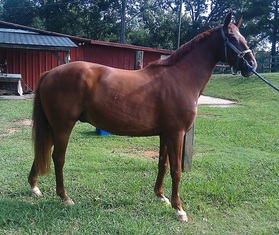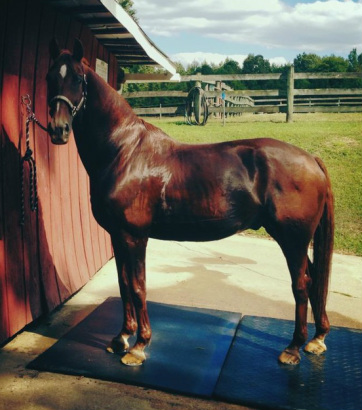Instructional videos
|
|
|
|
|
|
|
What Classical Dressage Can Do for Gait Quality and Longevity
The Quote That Woke Me
This is the excerpt from Paul Belasik that was my first introduction to him. For a bit of background, I was in a place of stagnation, frustration, with myself and my horse. I was in turmoil in my personal life and in the saddle. It was October of 2007. Wondering what the hell was I doing? WHY was I trying to do it with THIS HORSE? I was ready to give up and become the bridless banchee, grow out his mane and ride flat and hollow into the sunset. Then I found this paragraph, so clear, and profound. It changed my outlook on dressage, on horses, on riders and on myself forever. As Arlo Guthrie said "I wasn't sleepin' or nuthin' but I woke up"
With that, I hope it finds you well too.
As an art form, classical dressage riding has a strong similarity to certain kinds of rigidly stylised Japanese arts - Haiku and painting for example. In these arts we see that the artist is subject to some relatively strict rules of structure in which he must work.
The Haiku poet focuses his attention on new and personal ways to express something within this style. As impossible as it sounds, no two poems are alike, and furthermore, there seems to be no end to the supply of these original works. They are as infinite as creation itself. In classical dressage the movements performed are representations of natural movements that a horse might do at play or in courtship or territorial displays. This has been the central element in describing the classical riding approach - that is, that the movements must complement nature, and what is natural for the horse.
The riders' and trainers' tasks are to execute, within strict structures, something that is unique to the spirit of a particular horse. ONe thousand horses may stand side by side in piaffe and no two will be the same. The rider and horse's range of expression, like the poems, is also as infinite as creativity itself.
In classical dressage the creative focus is in exploring the personality of a particular horse's movement, within the structure of the art. Whilst all piaffes, for example, are recognisable as piaffes, the true classicist's creative attention will be to find the purest piaffe for that particular horse; a piaffe, recognisable as a piaffe, but unlike any other horse's piaffe; this individual horse's ultimate piaffe. the piaffe itself is not as important as HOW the horse piaffes. This horse's best piaffe is proof of true training.
Ultimately there is a similarity of art because the true artist is not burdened by the structure of the piaffe - any more than the true poet is not burdened by the structure of Haiku.
In the same way, the true artistic rider knows there is a movement called piaffe - but how his horse does it is where art comes in. There is no ultimate piaffe, any more than there is an ultimate poem. there is only the ultumate piaffe for a particular horse, just like there can only be an ultimate poem for a particular poet. The true piaffe, the true work of art, is by definition original.
Paul Belasik, Riding Towards the Light
With that, I hope it finds you well too.
As an art form, classical dressage riding has a strong similarity to certain kinds of rigidly stylised Japanese arts - Haiku and painting for example. In these arts we see that the artist is subject to some relatively strict rules of structure in which he must work.
The Haiku poet focuses his attention on new and personal ways to express something within this style. As impossible as it sounds, no two poems are alike, and furthermore, there seems to be no end to the supply of these original works. They are as infinite as creation itself. In classical dressage the movements performed are representations of natural movements that a horse might do at play or in courtship or territorial displays. This has been the central element in describing the classical riding approach - that is, that the movements must complement nature, and what is natural for the horse.
The riders' and trainers' tasks are to execute, within strict structures, something that is unique to the spirit of a particular horse. ONe thousand horses may stand side by side in piaffe and no two will be the same. The rider and horse's range of expression, like the poems, is also as infinite as creativity itself.
In classical dressage the creative focus is in exploring the personality of a particular horse's movement, within the structure of the art. Whilst all piaffes, for example, are recognisable as piaffes, the true classicist's creative attention will be to find the purest piaffe for that particular horse; a piaffe, recognisable as a piaffe, but unlike any other horse's piaffe; this individual horse's ultimate piaffe. the piaffe itself is not as important as HOW the horse piaffes. This horse's best piaffe is proof of true training.
Ultimately there is a similarity of art because the true artist is not burdened by the structure of the piaffe - any more than the true poet is not burdened by the structure of Haiku.
In the same way, the true artistic rider knows there is a movement called piaffe - but how his horse does it is where art comes in. There is no ultimate piaffe, any more than there is an ultimate poem. there is only the ultumate piaffe for a particular horse, just like there can only be an ultimate poem for a particular poet. The true piaffe, the true work of art, is by definition original.
Paul Belasik, Riding Towards the Light



